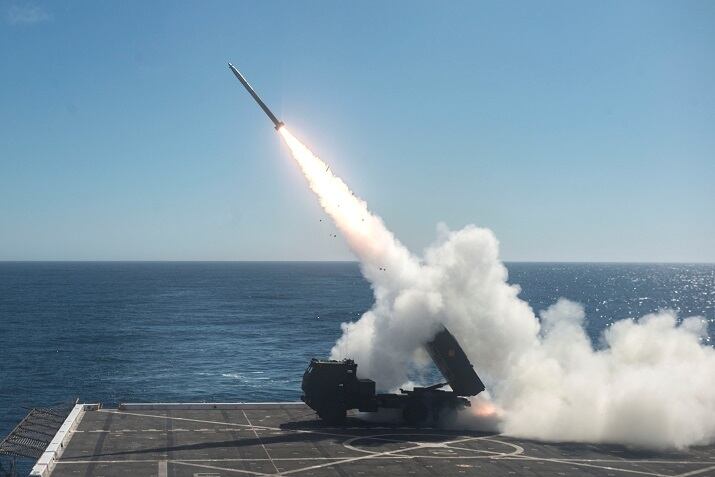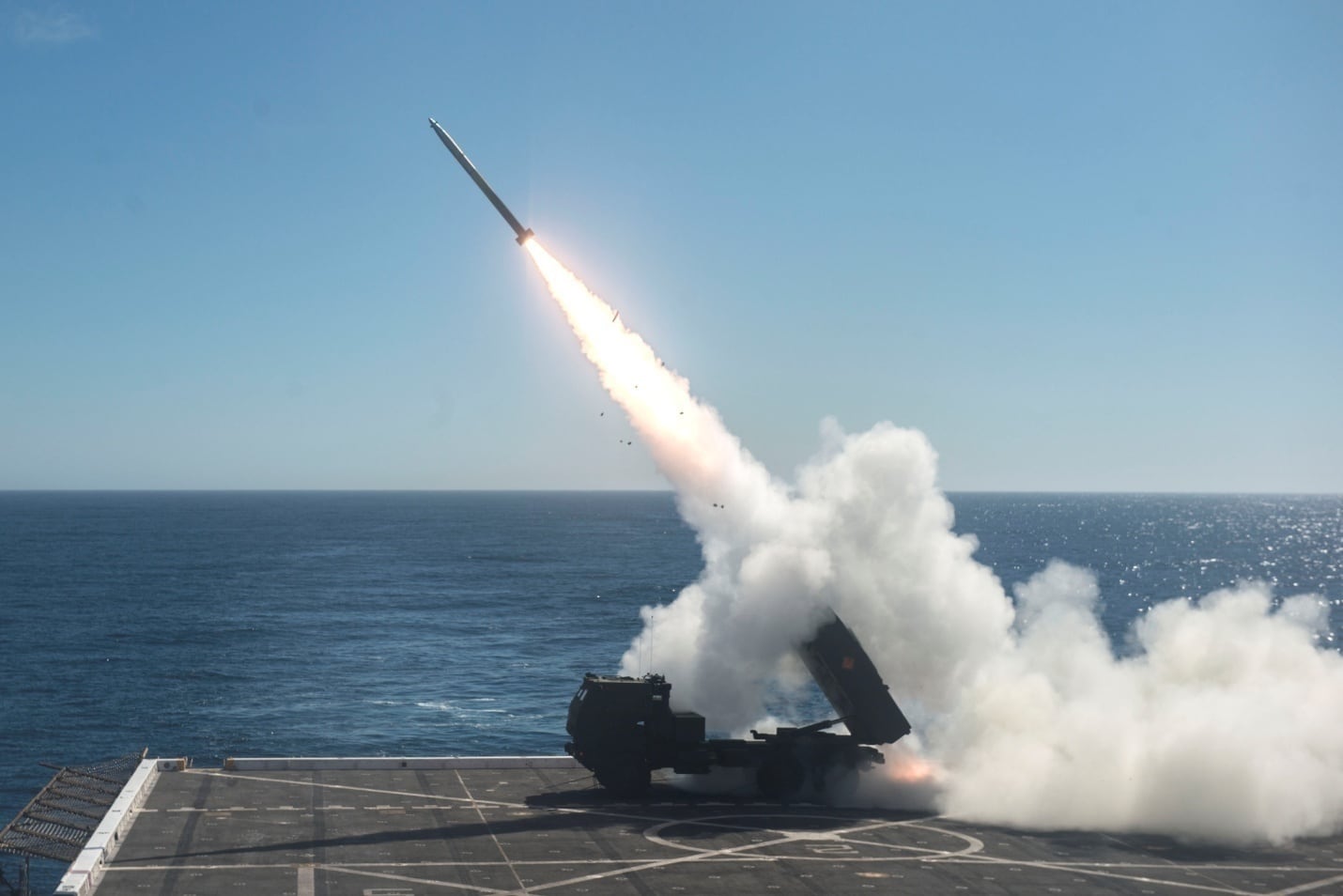Looking to the future, the Marine Corps is focused on increasing the range and lethality of its artillery and mortar systems while also maintaining precision strike capabilities.
Marines will need to be able to engage in battle across all domains to take on near-peer competitors, according to Lt. Gen. Brian D. Beaudreault, the deputy commandant for Plans, Policies and Operations.
When asked about the Corps’ future for its fire support weapon systems: “For us, it’s longer ranges with continued precision,” Beaudreault said at the 30th Annual National Symposium for the Surface Navy Association Wednesday.
That could be anything from the M142 High Mobility Artillery Rocket System, or HIMARS, being deployed on ships, to 81mm mortars with increased range.
The Corps will be looking to take what traditionally is considered an area weapon ― because of lack of pinpoint precision ― and turn it into a precision strike weapon system.
After 16-plus years of war in low-tech permissive environments like Iraq and Afghanistan, the Corps is catching up to compete with near-peer competitor threats from Russia and China, both of which are developing longer-range cruise missile systems.
But even less sophisticated enemy forces also are packing advanced weaponry, putting Marines and amphibious ships in harm’s way.
Iranian-backed Houthi rebels have been known to harass U.S. and Saudi warships with long-range, shore-based missile systems. And drone proliferation among nonstate actors could put shipboard Marines at greater risk.
Speaking at the Modern Day Marine expo at Marine Corps Base Quantico, Virginia, in September, Commandant Gen. Robert Neller said Marines would have to “fight to get to the fight.”
Combat in the littorals is fast becoming less of a permissive environment around the globe, especially near the South China Sea, where the Chinese military has created a man-made belt of islands with missile systems and sophisticated military hardware.
RELATED

America’s competitors have invested in technologies and weapons to deny U.S. warships access across various straits, and choke-points around the globe should conflict arise.
“We’ve got challenges today that need to be met,” Beaudreault said.
In October, Marines fired a HIMARS rocket from the deck of the amphibious transport dock Anchorage and successfully hit a target roughly 70-km away.
According to Beaudreault, HIMARS on ships is now a proven capability. But it’s not necessarily the course of action the Marines will take.
While the concept works, the Corps also wants to lighten the load of the Marine Air-Ground Task Force, or MAGTF.
The question for the Corps is “how can we lighten the MAGTF and increase fires,” Beaudreault said.
There also are a number of variations rocket artillery that can be employed by the Marines.
One includes the use of barges or towed barges, or it could be an “alternate platform that comes with a MEU [Marine Expeditionary Unit], he said.
Shawn Snow is the senior reporter for Marine Corps Times and a Marine Corps veteran.




